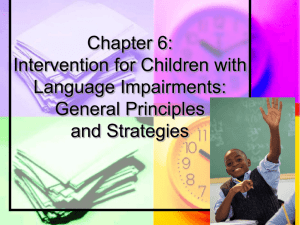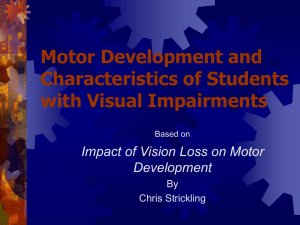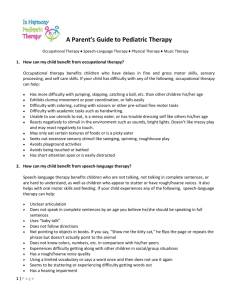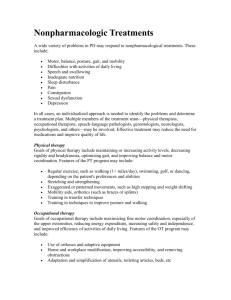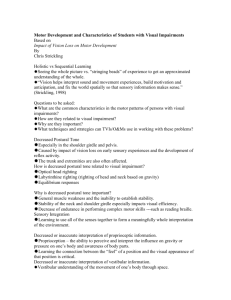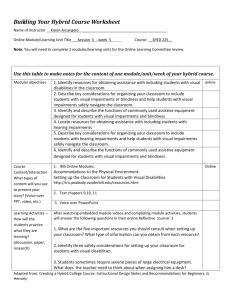Motor Impairments and Speech
advertisement
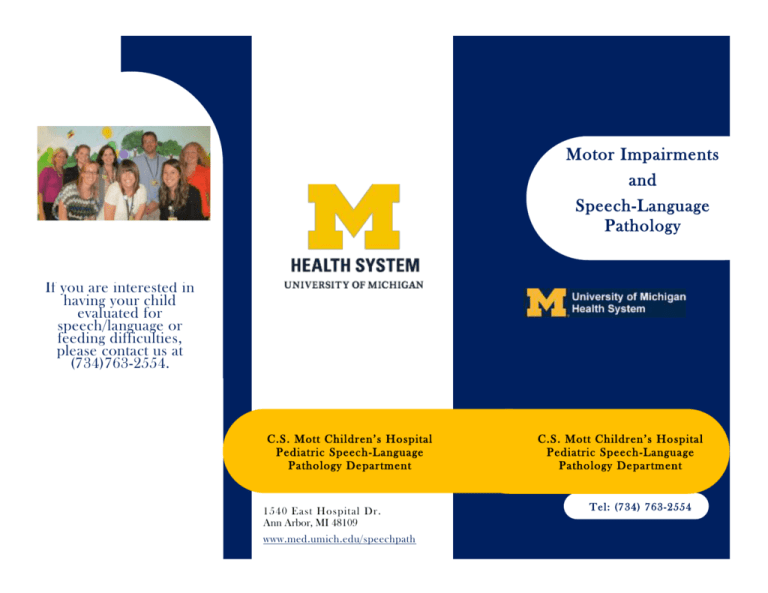
Motor Impairments and Speech-Language Pathology If you are interested in having your child evaluated for speech/language or feeding difficulties, please contact us at (734)763-2554. C.S. Mott Children’s Hospital Pediatric Speech -Language Pathology Department 1540 East Hospital Dr. Ann Arbor, MI 48109 www.med.umich.edu/speechpath C.S. Mott Children’s Hospital Pediatric Speech -Language Pathology Department Tel: (734) 763-2554 How Might Motor Impairments Affect Speech/Language Development? Motor impairments affect body movement, muscle control, muscle coordination, muscle tone and reflexes. This includes the muscles in the face, mouth, throat, tongue, and larynx used to produce speech (and for eating and swallowing). For some children with motor impairments, the ability to vocalize and/or use oral language may be impaired or difficult to understand even though the child's underlying cognitive and linguistic abilities are intact. How can a Speech-Language Pathologist (SLP) Help? Working with the full range of human communication, SLPs evaluate and diagnose speech, language, cognitivecommunication, and swallowing disorders and treat such disorders in individuals (ASHA, 2013). SLPs provide intervention to improve speech production and facilitate language development, assess and provide intervention to improve swallowing function, and use augmentative and alternative forms of communication when speech is unintelligible or difficult to produce. What is Augmentative/Alternative Communication (AAC)? Augmentative/Alternative Communication provides children with motor impairments with a means of communicating with familiar and unfamiliar communication partners. This can be done by enhancing natural speech production (augmentative communication) or replacing verbal language with a no-tech, low-tech, or high-tech communication system (alternative communication). Different Types of AAC No-Tech: •Physical Communication: gestures, body language, facial expression, sign language, interpreted eye gaze. •Symbol Communication: Picture Exchange Communication System (PECS), communication boards using printed pictures, alphabet board, wipe board, paper/pencil. Low-Tech: •Simple Switches: buttons with recorded voice messages. •Simple speech-generating devices: replaceable picture boards that overlay buttons with recorded voice messages (432 icons) that can be activated directly or with a switch. High-Tech: •Dedicated speech-generating devices: a computer or tablet equipped with communication software that provides digital and/or recorded messages linked to icons that can be activated directly or through alternative means (e.g., eye gaze, hand, head, or chin switches, head tracking).
